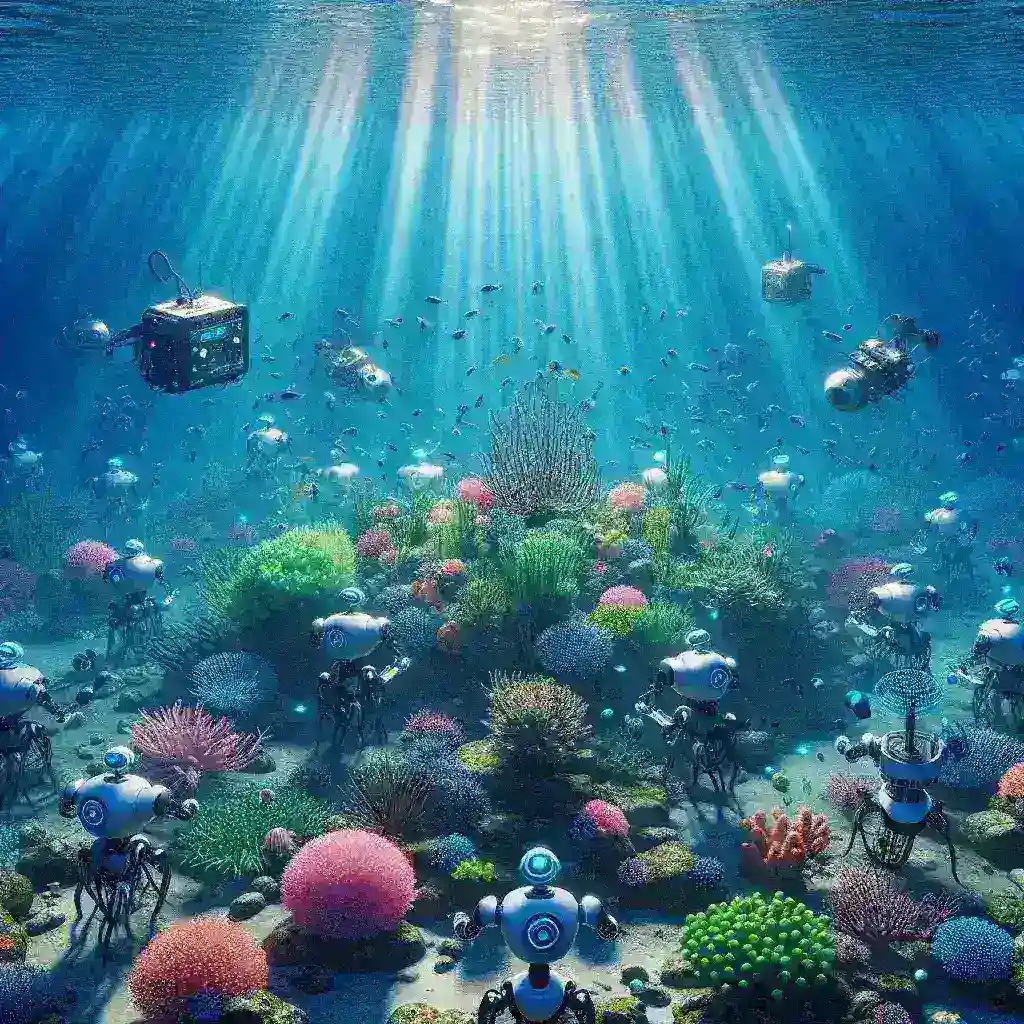Introduction
Coral reefs, often referred to as the “rainforests of the sea,” are vital to marine biodiversity and provide essential ecosystem services. However, they face unprecedented threats due to climate change, pollution, and overfishing. Recent advances in robotics and artificial intelligence (AI) have opened new avenues for coral restoration, enabling the creation of swarms of autonomous robots designed specifically for this purpose. This article explores the intersection of robotics, AI, and marine conservation, highlighting innovative approaches to coral reef restoration.
The Importance of Coral Reefs
Coral reefs cover less than 1% of the ocean floor yet support about 25% of all marine species. They provide habitat, protect coastlines from erosion, and sustain local economies through tourism and fishing. However, global coral cover has declined significantly over the past few decades, prompting urgent conservation efforts.
Threats Facing Coral Reefs
- Climate Change: Rising sea temperatures lead to coral bleaching, while ocean acidification affects coral growth.
- Pollution: Runoff from agriculture and urban areas introduces harmful substances into marine ecosystems.
- Overfishing: Disruption of the delicate balance within coral ecosystems leads to further degradation.
The Role of Robotics in Coral Restoration
Traditionally, coral restoration has involved manual efforts such as planting coral fragments and monitoring health. However, these methods are labor-intensive and often insufficient to combat the scale of degradation. Robotics offers a scalable solution through the deployment of autonomous systems that can efficiently carry out restoration tasks.
AI-Driven Swarms: A Revolutionary Approach
AI-powered swarms of robots are being designed to mimic natural processes and enhance coral restoration efforts. These swarms can communicate, coordinate, and execute complex tasks more efficiently than human divers, promising a new era of marine conservation.
How AI Swarms Function
- Autonomous Navigation: Using advanced algorithms, robots can navigate to designated restoration sites with minimal human intervention.
- Data Collection: Equipped with sensors, these robots gather critical data on water quality and coral health, providing valuable insights for ongoing monitoring.
- Collaborative Behavior: Swarm intelligence allows robots to work together, efficiently covering larger areas and increasing the overall effectiveness of restoration efforts.
Case Studies: Successful Implementations
1. Coral Bot Swarm Project
In the Coral Bot Swarm Project, researchers developed a fleet of underwater drones capable of planting coral larvae. The drones are programmed to identify suitable substrates and deploy larvae accordingly. Early trials have shown a remarkable increase in coral survival rates compared to traditional methods.
2. Reef Restoration in the Caribbean
In the Caribbean, a team of scientists utilized robotic swarms to restore degraded reefs. The robots were able to assess coral health and strategically place coral fragments in areas with the greatest potential for regrowth. This method demonstrated not only efficiency but also a significantly higher success rate in restoring coral populations.
Benefits of Using Robotics for Coral Restoration
Efficiency and Scalability
One of the primary advantages of using robotics is the efficiency and scalability it brings to restoration efforts. Robots can operate continuously, covering larger areas than human divers in a fraction of the time, which is crucial given the vastness of coral reef ecosystems.
Data-Driven Insights
AI-driven robots can collect and analyze data in real-time, providing critical insights into environmental conditions and coral health. This data can inform future restoration strategies and enhance adaptive management practices.
Cost-Effectiveness
While the initial investment in robotic technology may be high, the long-term cost savings associated with reduced labor and increased success rates in restoration projects can be significant.
Challenges and Considerations
Technological Limitations
Despite the potential of robotics in coral restoration, there are challenges to overcome. The underwater environment poses unique technological hurdles, including battery life, communication difficulties, and the ability to operate in varying conditions.
Ethical Considerations
The introduction of robotics in natural ecosystems raises ethical questions regarding human intervention. It is crucial to balance technology use with preserving natural processes and ensuring that restoration efforts do not inadvertently cause harm.
Future Predictions: A Sustainable Approach to Coral Restoration
As technology advances, the role of robotics and AI in marine conservation will likely expand. Future innovations may include more sophisticated sensors, improved AI algorithms for better decision-making, and enhanced collaboration between robots and marine ecologists.
Integrating Community Efforts
For robotics to have a lasting impact, community engagement and education are essential. Involving local communities in coral restoration efforts fosters a sense of ownership and responsibility towards marine ecosystems.
Conclusion
The integration of robotics and AI into coral reef restoration signifies a promising advancement in marine conservation. By utilizing technology to enhance restoration efforts, we can work towards healing our oceans and preserving the biodiversity that coral reefs support. The future of coral restoration lies in our ability to embrace innovation while respecting the delicate balance of marine ecosystems.
Call to Action
As we continue to face environmental challenges, it is imperative to support initiatives that leverage technology for conservation. Advocate for policies that promote the use of robotics in marine ecosystems and contribute to local conservation efforts wherever possible.


Leave a Reply